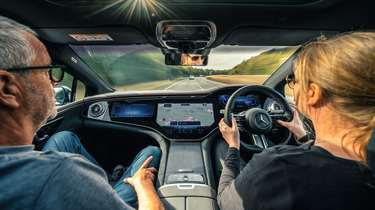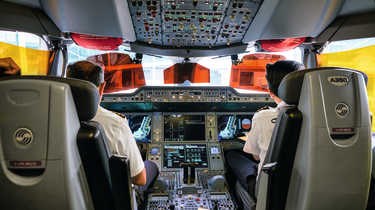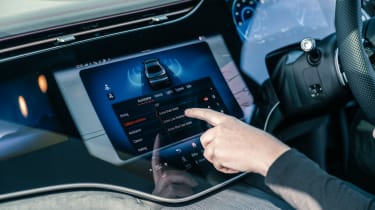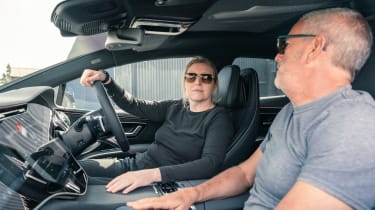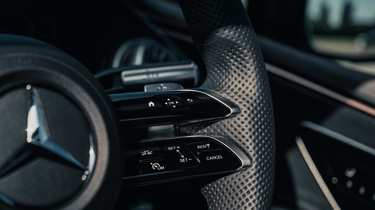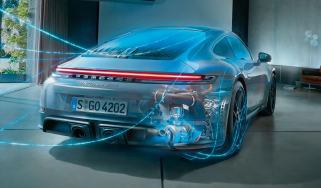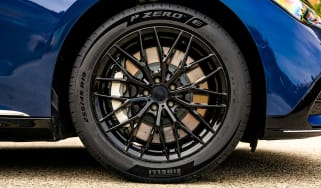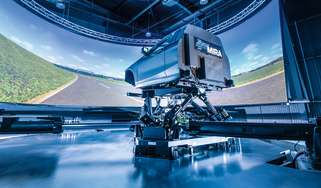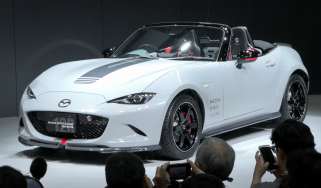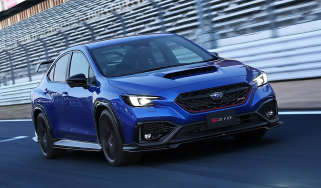How bad are modern car user interfaces? We ask an airline pilot
Do today’s touchscreen car user interfaces ask too much of the driver? And how can they be improved? We get an Airbus pilot’s expert opinion
Car makers are becoming more and more out of touch with the enthusiast. Cars are becoming too heavy, too big and overpowered. And worse, they are becoming overcomplicated and weighed down with equipment that is not relevant to a pure driving machine and which we never asked for.
Manufacturers are also losing touch with the ordinary consumer, putting complex infotainment and ‘aid’ systems into cars that at best are extremely difficult to understand and use and at their worst are very distracting or don’t even function properly. I’ve got close on several occasions over the last few years to saying to a manufacturer at a new car launch, ‘You’ve given us a day to drive this car. I have a choice: I can either spend that time sitting in the hotel car park learning all the systems or I can go out and drive it and assess its dynamics, powertrain and the other stuff that we traditionally do. But there isn’t time to do both.’
> Testing the ultimate £4m driving simulator
Recently while writing a review I described a car’s control systems as being as complicated as those on an Airbus airliner’s flight deck. Reflecting on this, I had a thought: why not put an airline pilot into a car that’s loaded with tech and features and ask them to compare it to flying their aircraft?
I was taught to fly by a very patient and brave instructor called Jane Foden. That was 18 years ago and once she’d recovered from this traumatic and challenging experience she embarked upon a career in the airlines. She worked her way up through regional airlines flying turboprops, to eventually sitting in the right-hand seat of Boeing’s glorious 747. Today she flies the Airbus A350 as a first officer. Our plan is simple: we give Foden a modern and complex car for a week with the brief that she has to do a deep dive into the car’s systems and, unlike most owners (and road testers), actually use all the various functions. Also, we’d like her to compare and contrast the control systems in the car with those in the aircraft for ease of use and safety.
There are numerous modern cars that are equipped with a baffling array of systems and it isn’t just the expensive or ‘premium’ models that suffer from the affliction of overcomplication. However, we have chosen the Mercedes-Benz EQS 450+ as a good example of a combination of complex systems and hard-to-use controls. A BMW, Audi or many other marques could have been chosen so we’re not singling out Mercedes here.
While we’re at it, we’re going to ask for Foden’s opinion of the car’s controls and how they compare with her Airbus’s. Does the airliner, for example, have pressure-sensitive switches that are not clearly marked?
‘Not surprisingly,’ explains Foden, ‘before you start flying a new type of airliner you have to undertake a type rating course. For the Airbus A350 we had ten days of classroom-based ground school of ten hours per day, followed by twelve four-hour sessions in a simulator. Finally, we fly ten sectors [or legs] in the actual aircraft sitting next to a training captain.’ Pretty thorough, in other words. And remember, Foden is a professional with many thousands of hours in her log book.
‘I decided to tackle the task you’ve given me in a similarly methodical way,’ Foden continues. ‘On the A350 course, CBT, or Computer Based Training, is used. I’d watch the video, take notes and then probably watch it again to make sure I understood everything. Delving into the Mercedes’ infotainment system I found the CBT videos that are intended to teach owners everything about their car. There are 24 of them; not as many as for the Airbus, but each one is from 1hr 30min to 3hr 30min. Worse, they use jargon such as Augmented Reality. I had to re-run that video several times to understand what they were talking about. There is a Quick Start section but even that has 14 topics in it.’
One of the specific functions that we were keen for Foden to become familiar with and use was the parking assistance, and in particular the function that allows you to park the car remotely from outside. If I remember correctly BMW pioneered this system but it’s something I never bothered with. ‘I found this almost impossible to use,’ says Foden, ‘and I don’t think you could master it without first printing out the instructions or having the CBT video next to you. I’m sure I’d get the hang of it eventually but you’d need to spend some time with it. I’ve used Park Assist on other cars, but I couldn’t get it to work on the EQS. There’s a section on it in the Quick Start guide that includes six sub-menus. I reckon you’d need two hours to fully understand the system.’
You can see from the photographs of the A350’s cockpit that, although this is a state-of-the-art modern airliner, there are hundreds of ‘old-fashioned’ knobs and switches. ‘On the flight deck every control is clearly and simply labelled,’ explains Foden. ‘By contrast, in the EQS there are a lot of random symbols dotted around the car. I found the steering wheel overly complicated and not well labelled. There are two home buttons, which seems overkill, and I accidentally adjusted my cruise-control speed because I brushed my thumb across the touch-sensitive button while turning.
‘Flight decks have tactile controls; meaning you can feel where things are while your eyes are out flying. The Airbuses have a sidestick instead of a traditional control column as found on Boeings and this stick has only two buttons on it: one like a trigger for the radio and the other a large red button to disengage the autopilot. You can’t mix them up.’
Another difference between a car and an airliner is the number of people operating the machine. ‘On a modern airliner you have a pilot flying and a pilot monitoring,’ says Foden. ‘The roles are decided before the flight so that I [as a first officer] could either be monitoring or flying. My job when flying is to look out of the windows, while the pilot who is monitoring programmes the systems [and perhaps adds a new waypoint] and monitors all the systems.
‘When driving the Mercedes I adopted a similar approach when my partner Matt was in the passenger seat; in other words I gave him some jobs to do. It took him five minutes to work out how to adjust the radio volume and in the process he accidentally messed with my seating position. Given time he’d learn these basic functions. Driving solo, you spend far too much time monitoring this car rather than driving it. Which is fine if there’s a crew of two in the sky with nothing to hit, bad if it’s just you as the driver on a busy road with cars and traffic lights to also monitor.’
When I’ve tackled car company engineers and designers about the safety ramifications of the distraction of overcomplicated systems, one of their lines of defence is that voice assistance can be used to control functions in the car. This is true, particularly so for those manufacturers that have a tie-up with Google and other AI and data specialists. ‘I used “Hey Mercedes”,’ says Foden, ‘and certainly it was able to control simple functions. I can see it getting much better at this as time goes on. Needless to say, conversations in the A350 are strictly one-way. The aircraft tells us things – that we’ve disconnected the autopilot for example – but we can’t control anything by voice.’
Sadly, I don’t see an end to this trend of adding more and more unneccessary tech to cars. Car makers, who live 24/7 in a fantasy world in which all 4x4s are about to set off across the Sahara driven by Bear Grylls or Ranulph Fiennes, and owners of powerful luxury cars such as Bentley Bentaygas lie awake at night thinking about potential Nürburgring lap times, ignore the fact that the average age of a new car buyer is dangerously close to 60.
Euro NCAP has recently stated that it will ‘incentivise OEMs to have physical, easy-to-use and tactile controls’ if they want to achieve the highest safety ratings. My only hope is that the measures go far enough to encourage a thorough reappraisal of the usability and safety of modern cars’ systems and how they are operated, and the dangerous distraction they encourage. I’d suggest that car manufacturers should take a look at how the airliner industry does things.
This story first featured in evo issue 321.
